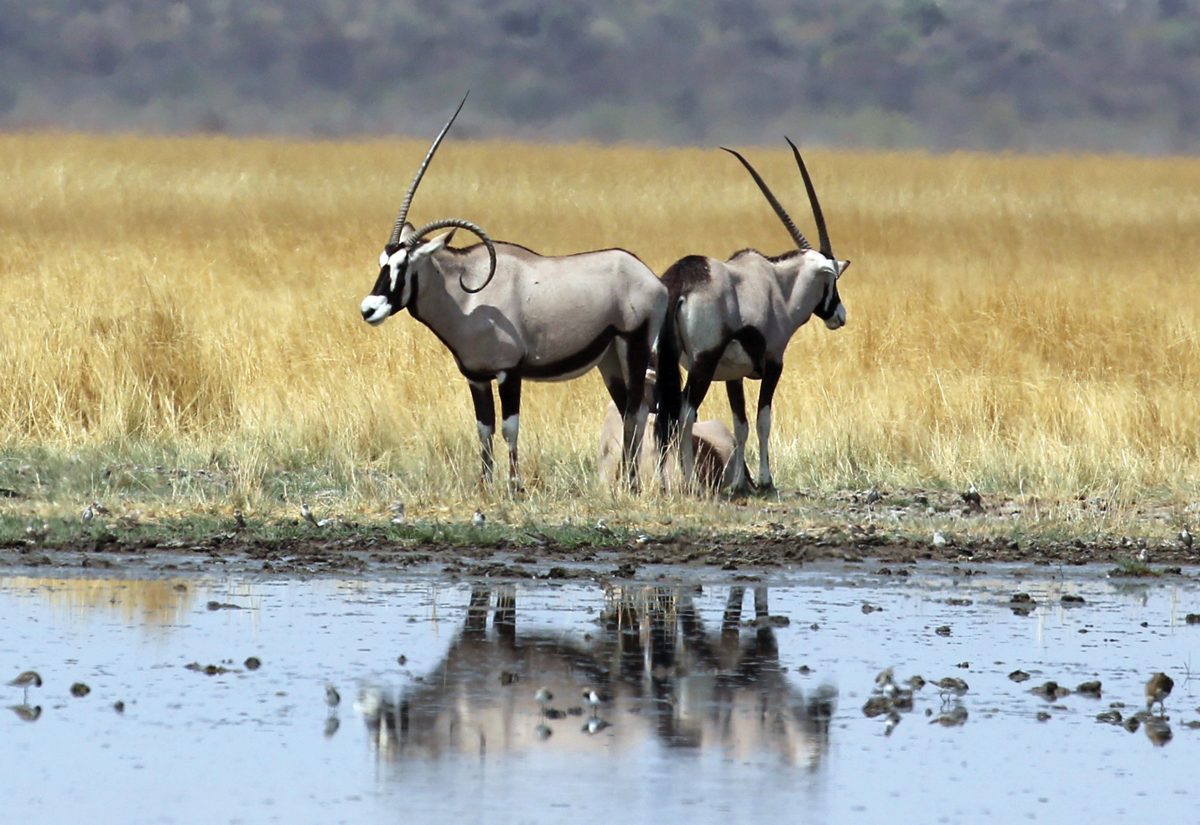
Among the numerous gemsbok, blue wildebeest, Burchell’s zebra and springbok at the Andoni waterhole north of Namutoni in Etosha National Park, two gemsbok stood out from the crowd. Both had a straight (as an gemsbok horn should be) right horn, but their left horns were bending backwards next to their necks. While the one’s deformed horn had a backward curve, a straight middle section and a tip pointing downwards, the other animal’s left horn curved backwards and curled in.
Text Dirk Heinrich
The two animals did not seem to have any problems with their unusual horns, except when trying to scratch themselves at certain points on the body. Both animals, first spotted on the 19th of November 2019, were seen again at the same waterhole a year later – one on the 6th and the other on the 9th of November 2020.
A female gemsbok, spotted at the Homob waterhole between Halali and Okaukuejo on the 16th of November 2019, was not so lucky. The left horn had grown in a curl and penetrated the antelope’s head just below the ear. This must be causing constant pain and, as the horn continues to grow, could eventually result in a painful death. Another gemsbok, spotted six days later at the Newbroni waterhole east of Okaukuejo, had her left horn curved to the front while the right horn was straight.
Both gemsbok bulls and cows have horns. The males’ straight and pointed horns are usually thicker at the base and shorter than the thinner and longer horns of the females. The gemsbok at Newbroni had a slight handicap when it came to drinking and grazing and had to turn the head slightly to the left to reach the water or short grass. The same problem is experienced by an gemsbok seen between Sesriem and Sossusvlei and one spotted near Namib Desert Lodge, since one of their horns is bent downwards to the side of the neck and forces the animals to turn their heads sideways to reach water or short grass, melons and acacia pods.
Horns that have turned inwards – the right one more so than the left one, forming a diamond shape – seemed to present no problems for a gemsbok which was spotted near Springbokfontein between Namutoni and Halali. Whether this shape is a handicap or disadvantage during fights is not known.
According to Dr Hans-Otto “HO” Reuter, a well-known wildlife veterinarian and experienced game catcher, horns start growing in unusual directions and into strange shapes if the tip is damaged while the animal is still young. This could happen on farms when the calves crawl through fences or run through the bush, while playing or when the still soft horn tip is hit by the horns of adults.
It is well known that gemsbok do break their very strong and resistant horns during fights. Sometimes only the tip is broken off, on some occasions half the horn is missing after a heavy encounter and then there are the unlucky ones whose horn breaks off at the base. This is a painful and bloody experience. The individual often walks around for some time with a horn dangling down next to its head until the damaged horn eventually falls or rips off. For the rest of its life the antelope is a left- or right-sided “unicorn”.






